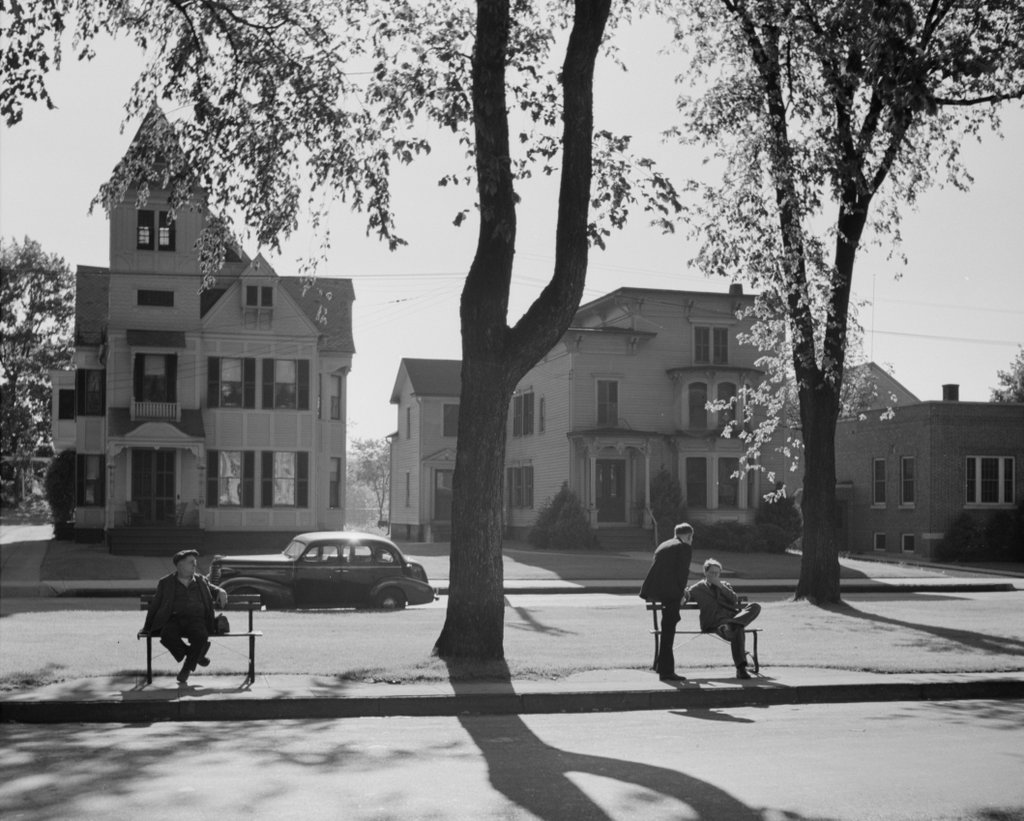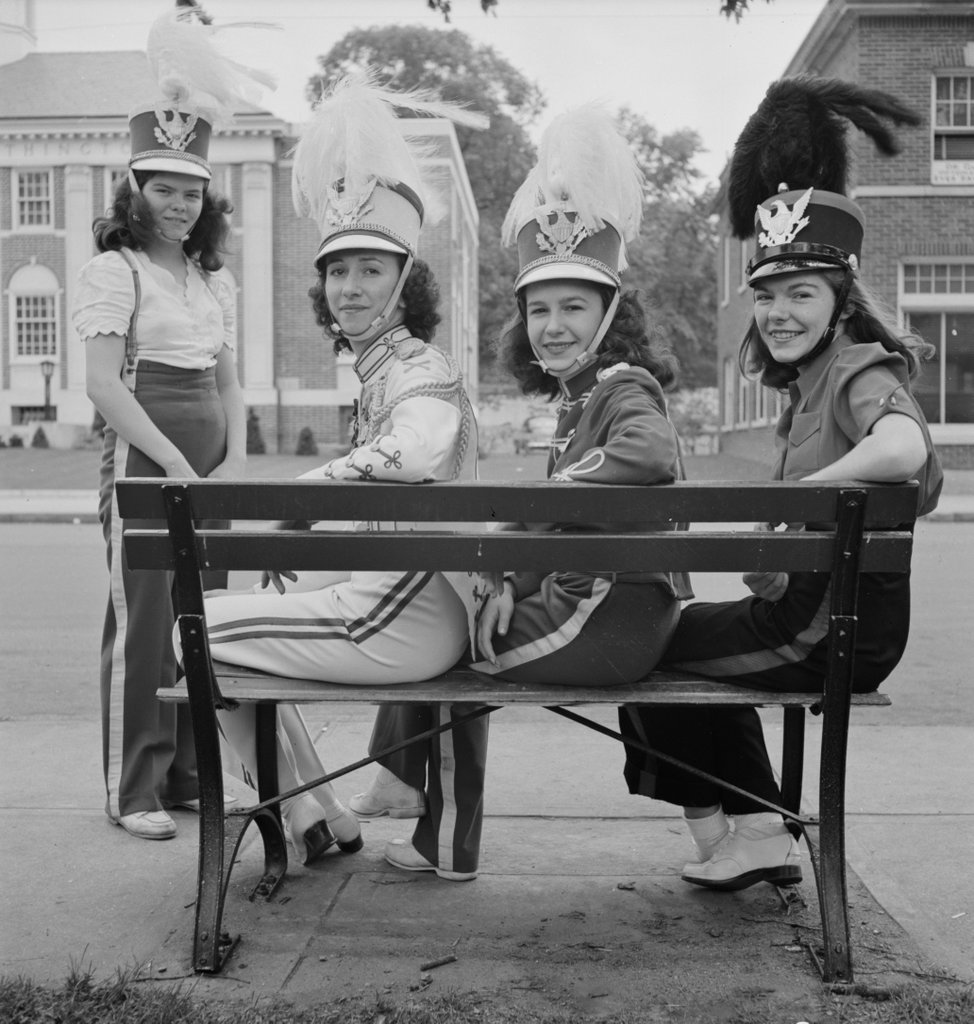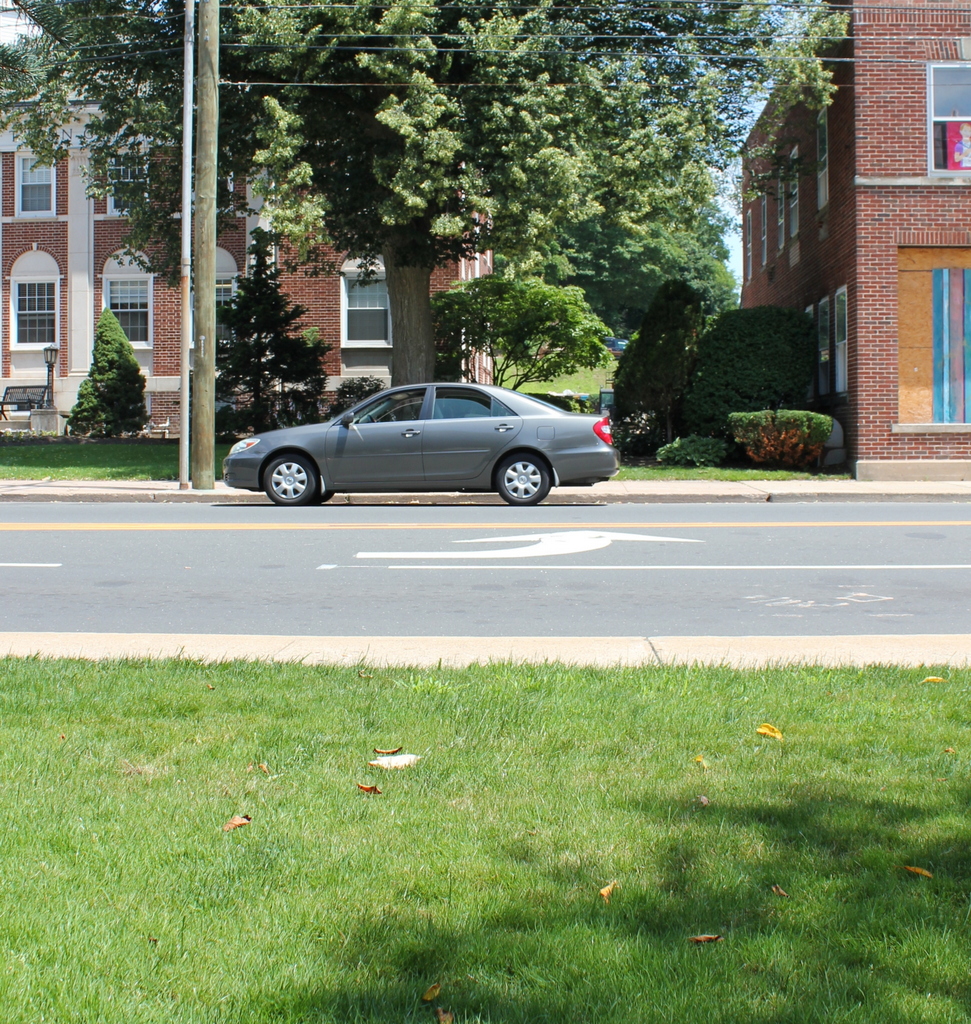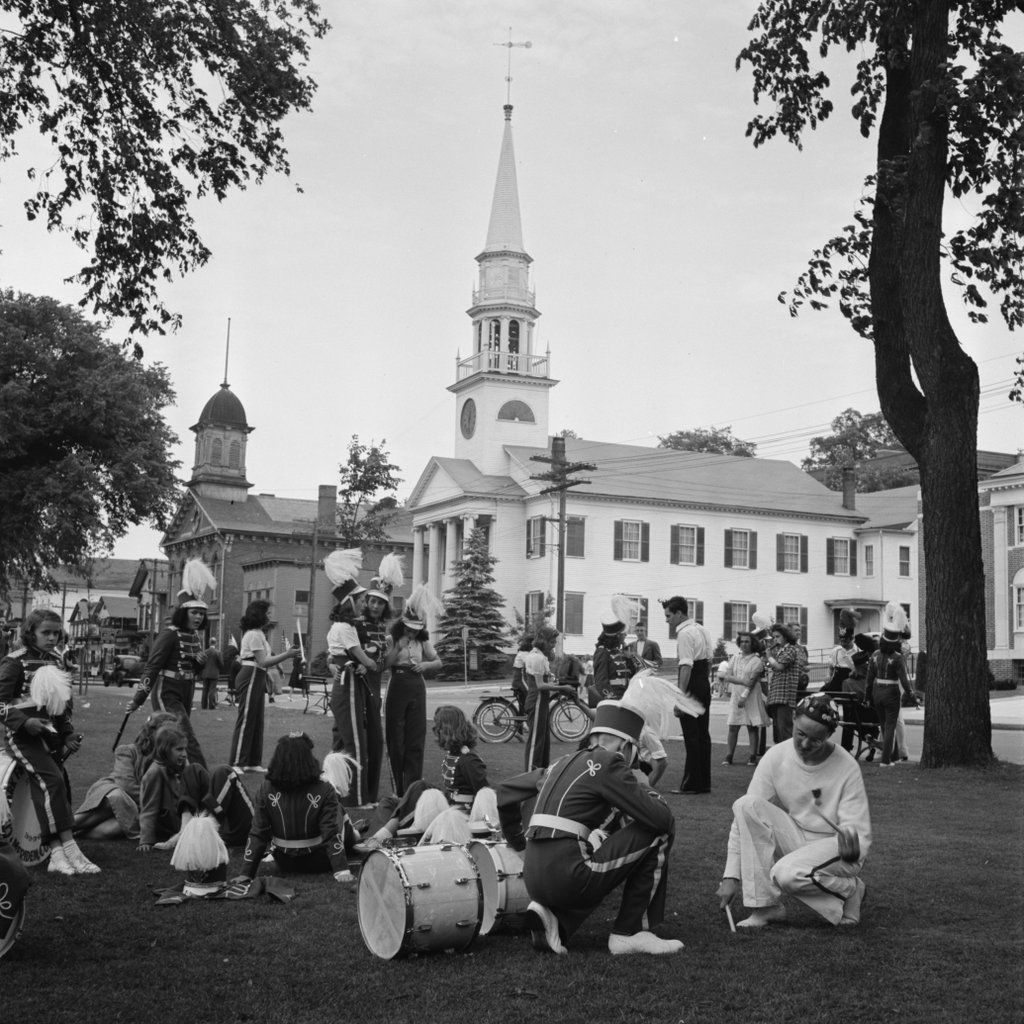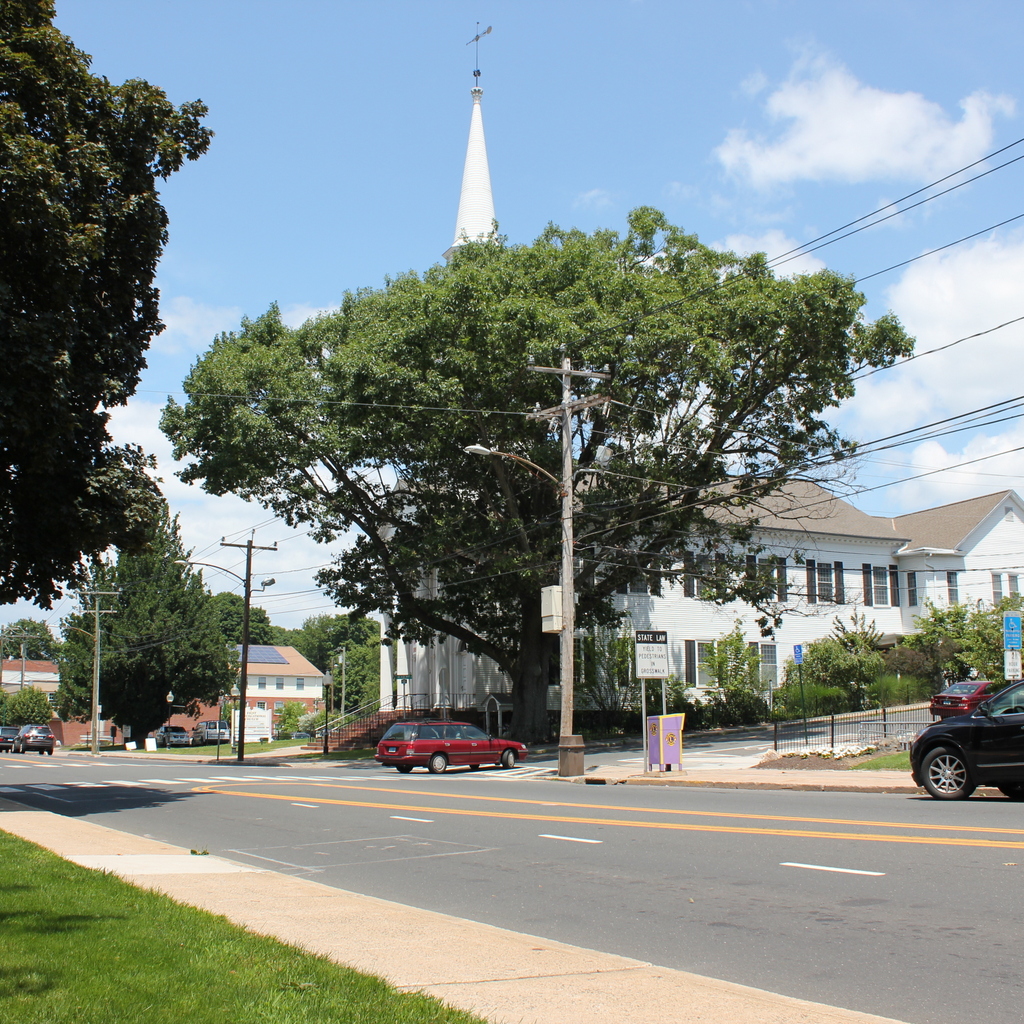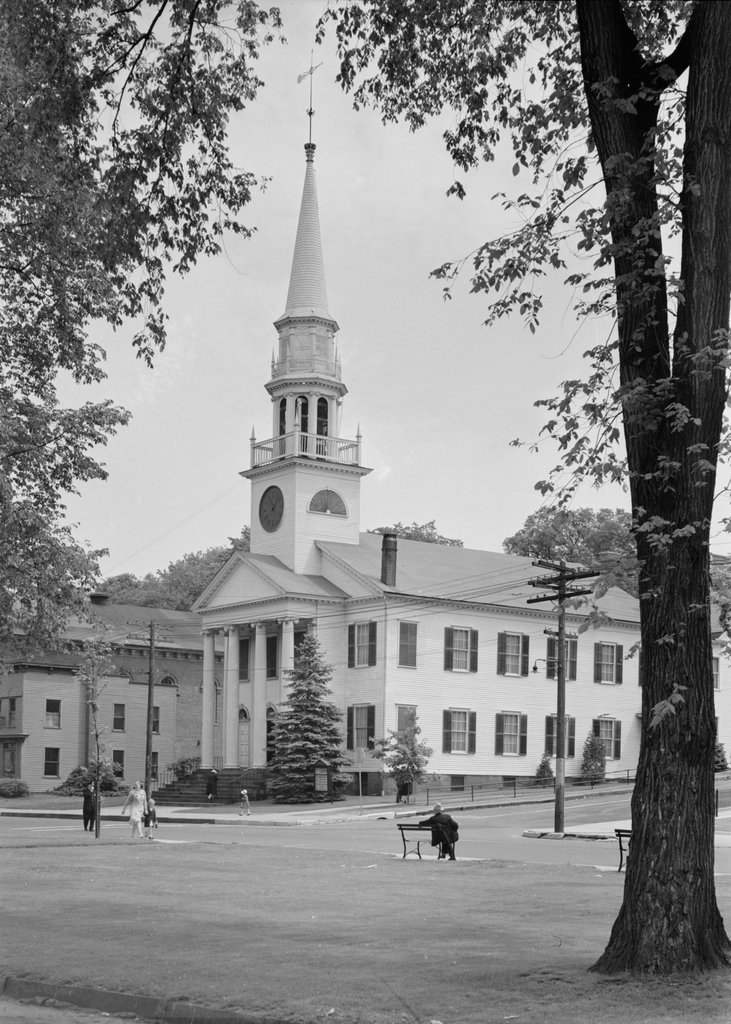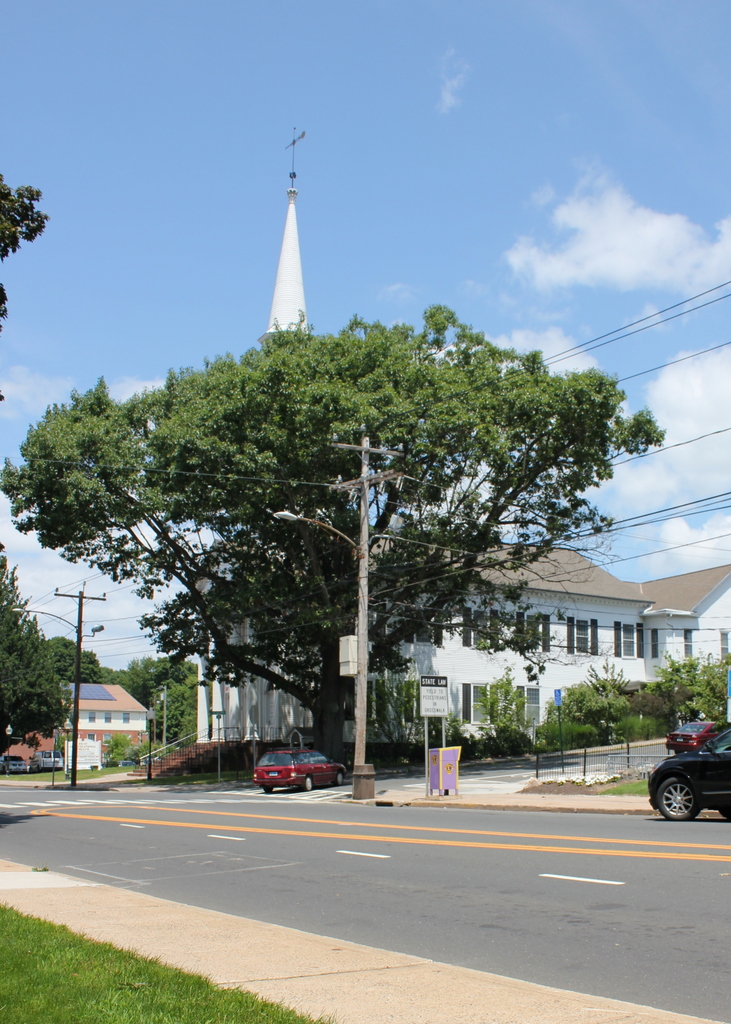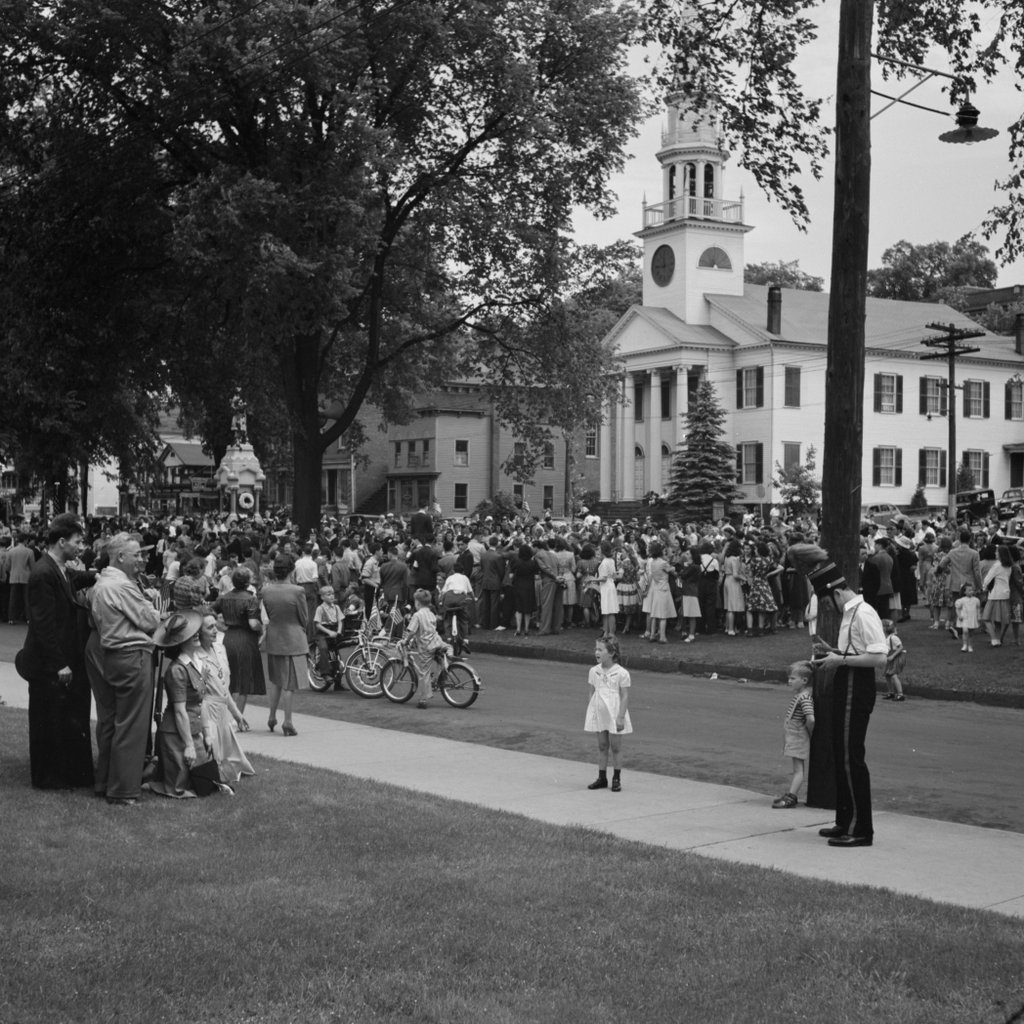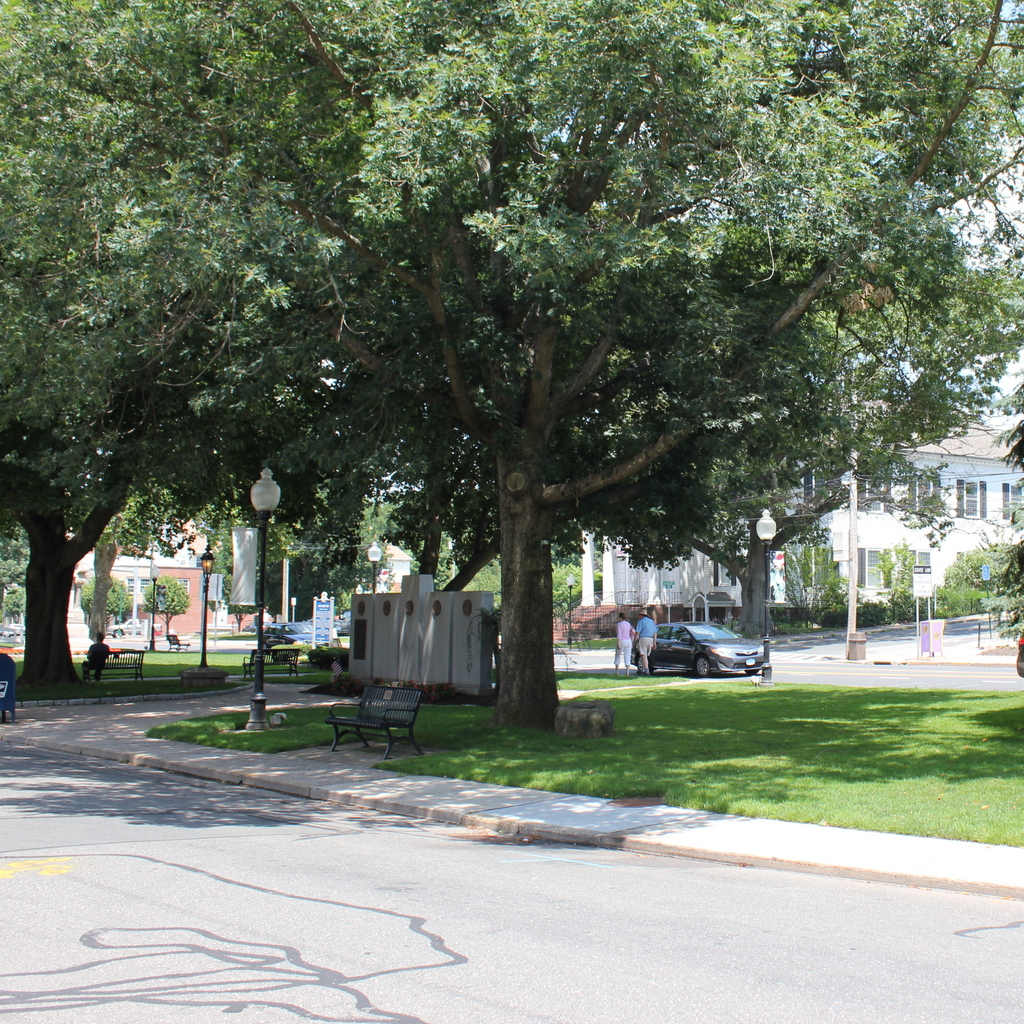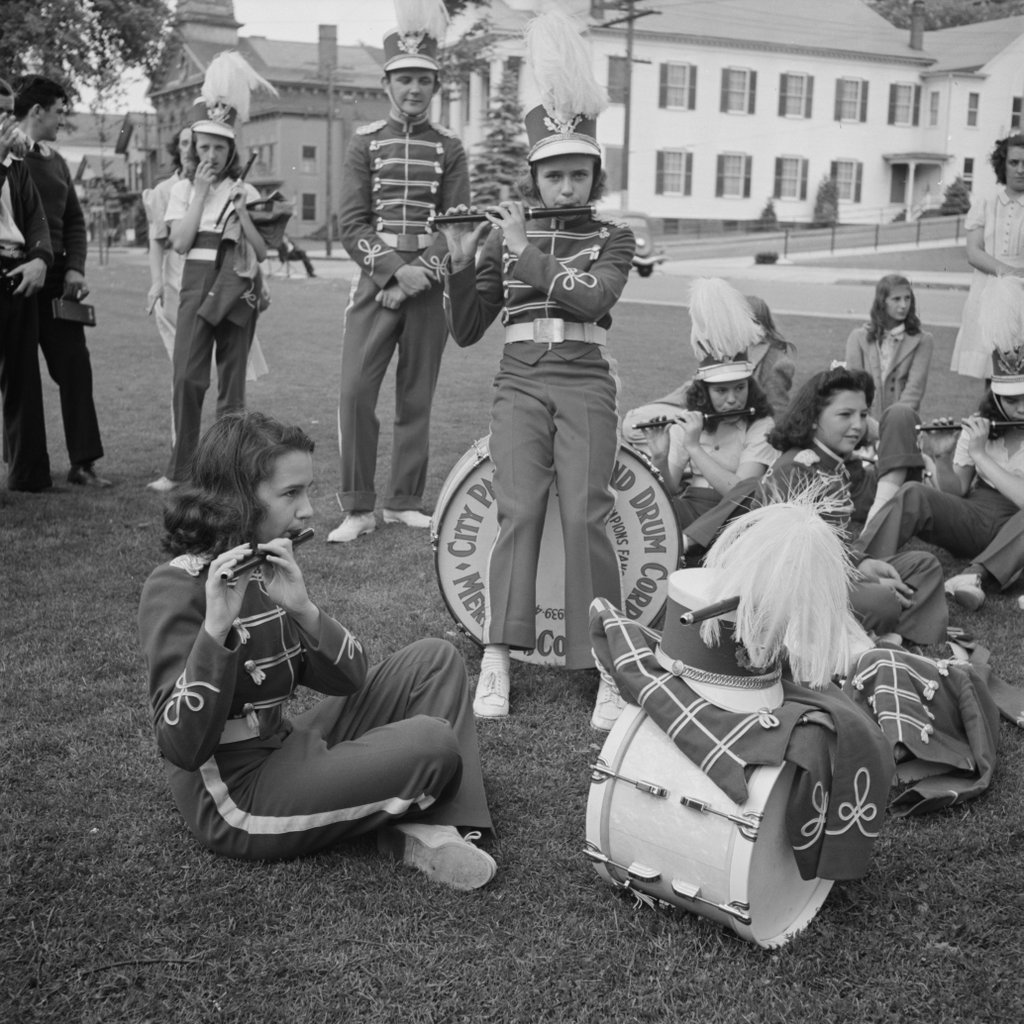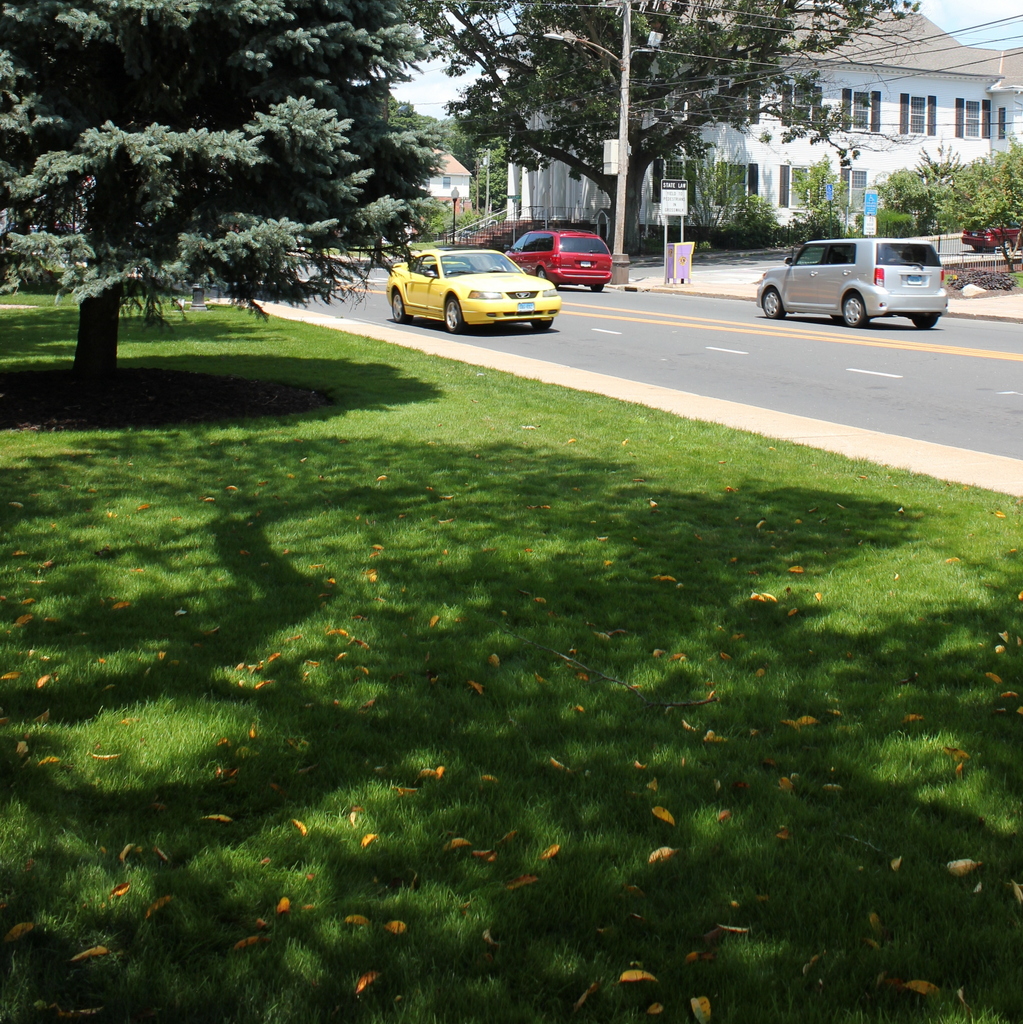The town green in Southington, seen from across Main Street facing west, in May 1942. Image courtesy of the Library of Congress, FSA-OWI Collection.
The same view in 2015:
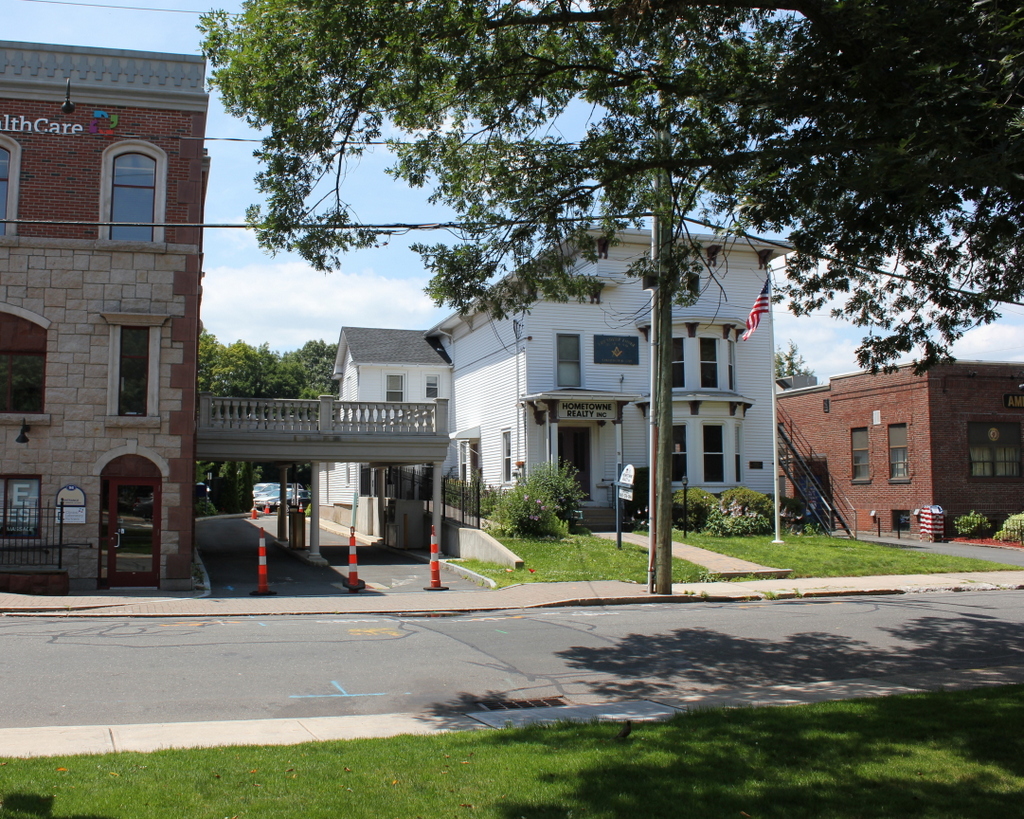
The first photo shows two houses that once stood on the west side of the town green. They appear to have been built in the late 1800s, and were probably single family homes originally. The one on the right was probably the older of the two; its Italianate architecture was popular for American homes in the 1860s and 1870s. The house to the left, with its tower and many different gables, resembles the Queen Anne style that became popular in the 1880s and 1890s.
The older house still stands today, although it is now a real estate agency and a Masonic lodge. It has clearly been modernized on the exterior, but it still retains some of its original features. The American Legion building to the right of it, seen closer in this post, is also still standing, but the Queen Anne house to the left has since been demolished, and a large commercial building now occupies the lot.

